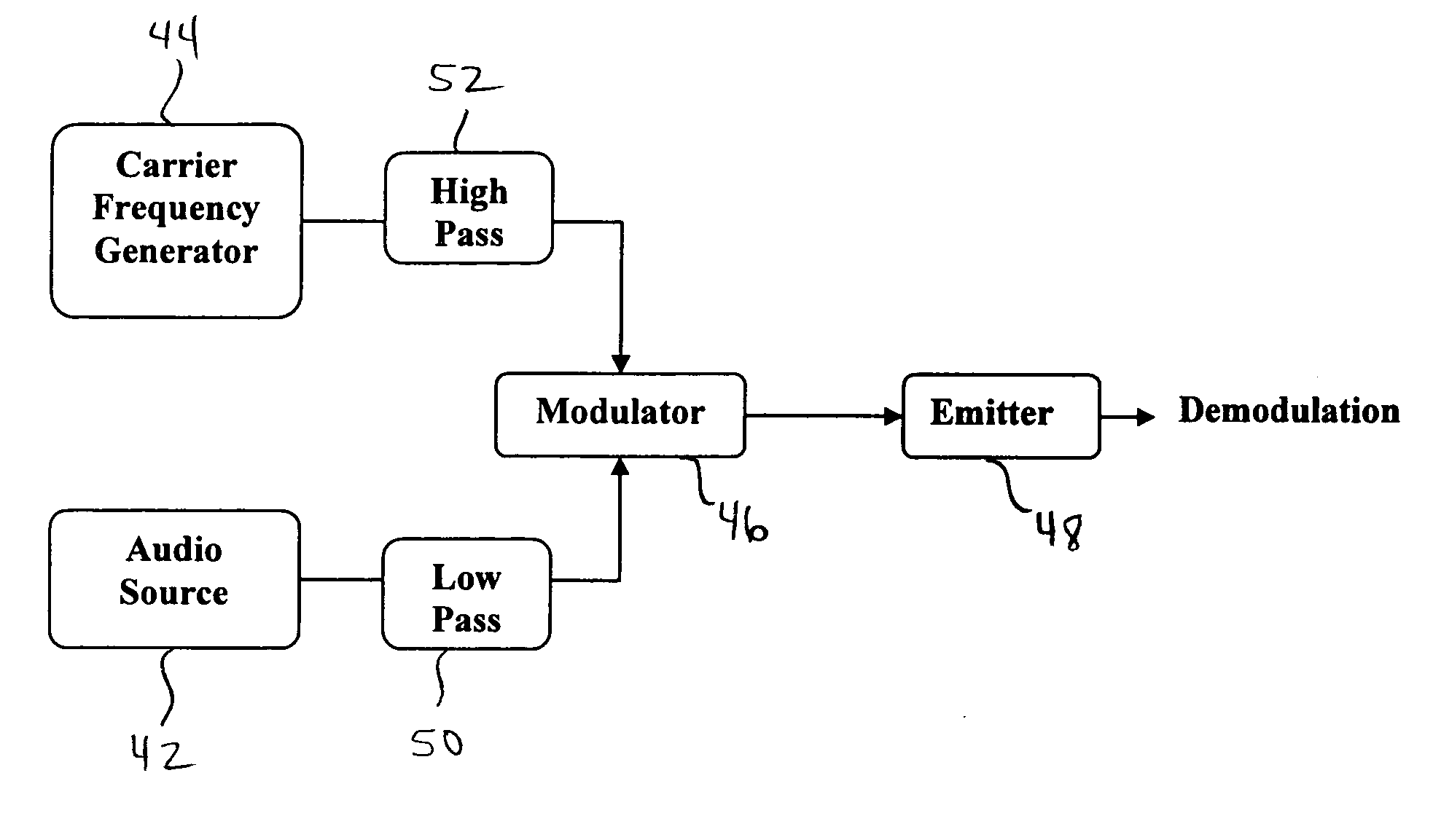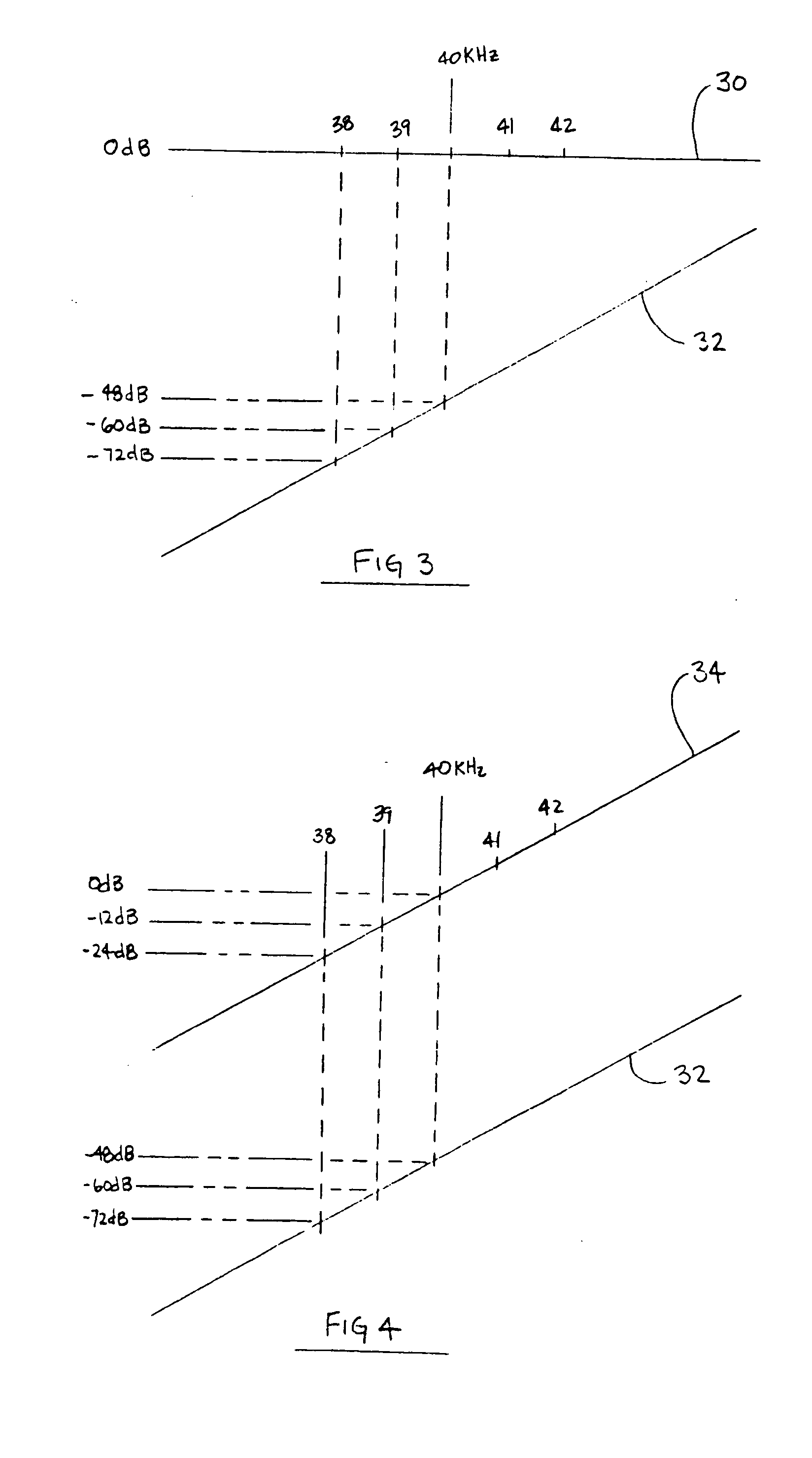Parametric sound system with lower sideband
a sound system and sideband technology, applied in the field of parametric loudspeakers, can solve the problems of inability to achieve parametric efficiency, inability to achieve distortion reduction processing, and inability to achieve the desired output and parametric efficiency of flat response transducer systems
- Summary
- Abstract
- Description
- Claims
- Application Information
AI Technical Summary
Problems solved by technology
Method used
Image
Examples
Embodiment Construction
[0016] Reference will now be made to the drawings in which the various elements of the present invention will be given numerical designations and in which the invention will be discussed so as to enable one skilled in the art to make and use the invention. It is to be understood that the following description is only exemplary of certain embodiments of the present invention, and should not be viewed as narrowing the claims which follow.
[0017] The present invention is a system and method for providing a parametric loudspeaker system with greater output for a parametric array with significantly less distortion than with previous systems. This is realized in part by the attenuation of energy at frequencies below the carrier frequency that may approach the audio range and cause distortion of the program material. In the present system, an incoming audio signal is modulated onto a higher ultrasonic carrier frequency to create a modulated signal. This modulated signal is then passed thro...
PUM
 Login to View More
Login to View More Abstract
Description
Claims
Application Information
 Login to View More
Login to View More - R&D
- Intellectual Property
- Life Sciences
- Materials
- Tech Scout
- Unparalleled Data Quality
- Higher Quality Content
- 60% Fewer Hallucinations
Browse by: Latest US Patents, China's latest patents, Technical Efficacy Thesaurus, Application Domain, Technology Topic, Popular Technical Reports.
© 2025 PatSnap. All rights reserved.Legal|Privacy policy|Modern Slavery Act Transparency Statement|Sitemap|About US| Contact US: help@patsnap.com



